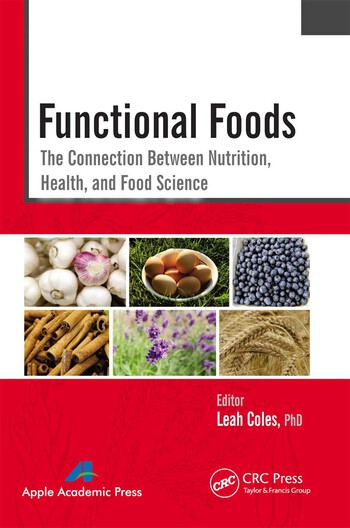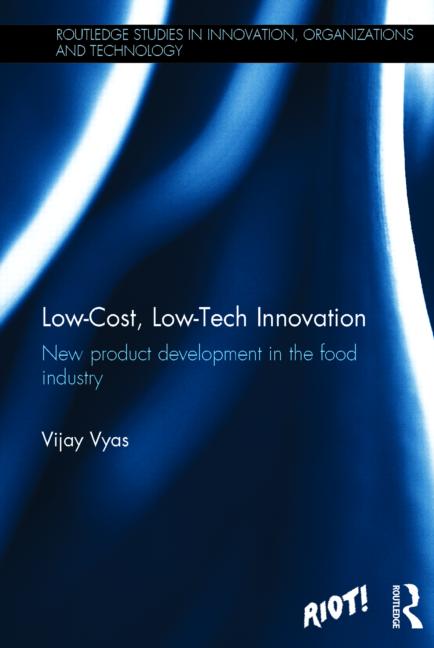Saturated Fatty Acids: A new viewpoint What Does the Science Say About Fats & Oils in the American Diet?
Mozaffarian provided a history of the study of the diet-heart relationship which has held as conventional wisdom the following “equation”: total fat/saturated fat àserum total and LDL (‘bad’) cholesterol àcoronary heart disease. This long-term theory is based on a combination of ecologic studies, biomarker studies and animal experiments. Similarly, the relationship between lifestyle and obesity, based on similar data, and summarized as: total fat/energy density àenergy consumption and energy expenditure àAadiposity.
But with advances in nutritional science, Mozaffarian identified a number of dietary constituents besides total fat and saturated fatty acids (SFA) – both whole foods and ingredients – that impact either positively or negatively, a variety of parameters which may lead to heart disease (Figure 1). In addition, new clinical results point to a number of lifestyle variables which can impact, again directly or indirectly, obesity (Figure 2).
Figure 1: Diet and the heart: What modern science suggests
Figure 2: Lifestyle and obesity: What modern science suggests
Reducing saturated fatintakes had been a key message indietary guidelinesfor years.
SFA and Heart Disease: Research Results
Increasing evidence is questioning the historical nutrition dogma regarding a positive association between SFA intake and risk of cardiovascular disease (CVD).
For example, a 2010 meta-analysis of 16 prospective cohort studies, which included the follow-up of 347,747 subjects during 5 to 23 years, reported that SFA was not associated with an elevated risk of coronary heart disease, stroke or CVD[i]. The pooled relative risks were 1.07 (95% CI: 0.96-1.19, p = 0.22) for coronary heart disease, 0.81 (95% CI: 0.62-1.05, p = 0.11) for stroke, and 1.00 (95% CI: 0.89-1.11, p = 0.95) for CVD. No association between dietary SFA and CVD prevalence was found after adjustment for other nutrients and total energy.
Similar results were reported with a meta-analysis of cohort studies and randomized controlled trials of SFA and coronary heart disease published in 2009[ii]. In this assessment, the intake of SFA was not significantly associated with coronary heart disease deaths or events per 5% total energy increase in SFA intake. From the meta-analysis of randomized controlled trials of dietary fat and coronary heart disease, the relative risk of fatal coronary heart disease was not reduced by fat-modified diets.
Mozaffariandescribed the findings of a pooled analysis of cohort studies which did not show any significant association between higher intakes of SFA, meat or milk and coronary heart disease[iii]. The relative risks were 1.06 (95% CI: 0.96-1.15) for SFA, 1.23 (95% CI: 0.98-1.49) for meat, and 0.94 (95% CI: 0.75-1.13) for milk. The association between SFA and coronary heart disease in cohort studies remained statistically insignificant after dietary exposures were stratified by variables such as dietary assessment tool, sex, geographic region, and type of prevention strategy. However, there was no evidence from pooled analyses of randomized controlled trials to support a causal association between SFA, meat or milk and coronary heart disease.
The relationship between SFA intake and the risk of CVD mortality was investigated in 58,453 Japanese adults aged 40 to 79 years, in another prospective cohort study published in 2010[iv]. Of note, dietary SFA intake was inversely associated with risk of total stroke, intraparenchymal hemorrhage and ischemic stroke; and noassociations between SFA intake and subarachnoid hemorrhage and heart diseases such as ischemic heart disease, cardiac arrest and heart failure were found.
SFA and Heart Disease: The Replacement Matters
Several studies have examined the question as to whatSFA should be replaced with in the diet.Mozaffarian’s own research suggests that the role of SFA in CVD risk must be evaluated in the context of its replacement by other macronutrients.
Mozaffarian described the results of his systematic review and meta-analysis of randomized controlled trials published in 2010 which concluded that there is strong evidence that consumption of polyunsaturated fat (PUFA) as a replacement for SFA lowers coronary heart disease risk[v]. The pooled risk reduction for coronary heart disease events in the intervention groups compared to the controls was 19%, with a relative risk of 0.81 (95% CI: 0.70-0.95, p = 0.008). Further, for each 5% energy of increased PUFA instead of SFA, there was a 10% reduction in the risk of coronary heart disease, with a relative risk of 0.90 (95% CI: 0.83-0.97).
For mixed n-3/n-6 PUFA diets, Ramsden and colleagues noted that the pooled risk for non-fatal myocardial infarction and coronary heart disease death was significantly reduced by 22% with risk ratio 0.78 (95% CI: 0.65-0.93, p = 0.005) following a comprehensive systematic review and meta-analysis of randomized controlled trials[vi]. Pooled risk for non-fatal myocardial infarction and coronary heart disease death was increased by 13% with risk ratio 1.13 (95% CI: 0.84-1.53, p = 0.43) for n-6 specific PUFA diets.
In this analysis, the substitution of n-6 PUFA for trans fat and SFA without simultaneously increasing n-3 PUFA produced an increase in risk of death that approached statistical significance, with risk ratio 1.16 (95% CI: 0.95-1.42, p = 0.15).
Jakobsen et al. has recently compared the intakes of SFA with carbohydrates and the risk of myocardial infarction using a prospective cohort study of 53,644 Danish women and men aged 50 to 64 years[vii]. They reported that replacing SFA with low glycemic index carbohydrates is associated with lower risk of myocardial infarction, whereas replacing SFA with high glycemic index carbohydrates is associated with a higher risk.
After adjustments for confounding variables such as body mass index, smoking status and physical activity, the hazard ratio for myocardial infarction per 5% energy intake increase from carbohydrates and a concomitant lower energy intake from SFA was 1.04 (95% CI: 0.92-1.17). There was a non-significant inverse association between substitution of low glycemic index carbohydrates for SFA and risk of myocardial infarction, with a hazard ratio of 0.88 (95% CI: 0.72-1.07);
This data suggests that replacing SFA with more processed, lower fiber, higher glycemic index carbohydrates might have no effects or even be harmful. Effects of replacing SFA with carbohydrates could also vary with an individual’s susceptibility to insulin resistance/metabolic syndrome.
Effects of Different Saturated Fatty Acids on CVD?
Mozaffarian stressed that the effects of dietary fats on total:HDL cholesterol may differ markedly from their effects on ‘bad’ LDL cholesterol[viii]. He described the results of the landmark study by Mensink and colleagues in which a meta-analysis of 60 selected trials was performed to assess the effects of the amount and type of fat on total:HDL cholesterol and on other lipids[ix]. The ratio of total:HDL cholesterol decreased if cis unsaturated fatty acids replaced SFA. The effect on total:HDL-C of replacing trans fatty acids with a mix of carbohydrates and cis unsaturated fatty acids was almost twice as large as that of replacing SFA. Lauric acid (C12:0) was found to greatly increase total cholesterol, but much of this effect was on ‘good’ HDL cholesterol and thus the ratio of total to HDL cholesterol was decreased. Myristic (C14:0) and palmitic (C12:0) acids had little effect on the ratio, and stearic acid (C18:0) reduced the ratio slightly. Replacing fats with carbohydrates increased fasting triacylglycerol concentrations.
Human clinical studies are required to determine the effects of SFA on different cholesterol biomarkers as well as non-cholesterol risk factors such as systemic inflammation; endothelial function; visceral adiposity and weight gain; insulin resistance and diabetes and cardiac arrhythmias. Future research should also evaluate the health effects of specific foods consumed, i.e., SFA intake from different meats versus dairy versus tropical fats, as well as how individual factors, such as age, sex, lifestyle factors, predisposition to insulin resistance, or genetic variation, may affect a person’s response to their overall diet.
In his concluding remarks, Mozaffarian emphasized that a focus on reducing SFA consumption without considering the replacement nutrient or the many other food-based risk factors for CVD is unlikely to produce substantial intended benefits. To focus on total fat or saturated fat alone is not useful, leading to consumer confusion and distracting from what’s truly important - overall dietary quality. Although recommendations to replace SFA with PUFA appears to be supported by evidence, the role of other dietary factors (e.g., low omega-3, low fruits and vegetables, high trans fat, and high salt) in CVD risk warrants much more attention according to Mozaffarian. And, although investigation of individual nutrients provides important information on underlying mechanisms of effects, people make decisions about eating whole foods that contain many macro- and micronutrients in various amounts. An increased focus then on food-based scientific research and policy recommendations to reduce chronic disease appears appropriate.
[i]Co-Director, Program in Cardiovascular Epidemiology, Associate Professor of Medicine and Epidemiology, Division of Cardiovascular Medicine, Brigham and Women’s Hospital and Harvard Medical School, Departments of Nutrition and Epidemiology, Harvard School of Public Health.
[ii]Mozaffarian D. 2011. Nutrition and Cardiovascular Disease, Chapter 48.
In: Braunwald's Heart Disease; A Textbook of Cardiovascular Medicine, 9th Edition.
[iii]Siri-Tarino PW, Sun, Q, Hu, FB and Krauss, RM. 2010. Meta-analysis of prospective cohort studies evaluating the association of saturated fat with cardiovascular disease. Am J Clin Nutr. 91:535-46.
[iv]Skeaff CM and Miller, J. 2009. Dietary fat and coronary heart disease: summary of evidence from prospective cohort and randomize controlled trials. Ann Nutr Metab. 55(1-3):173-201.
[v]Mente A, de Koning, L, Shannon, HS, and Anand, SS. 2009. A systematic review of the evidence supporting a causal link between dietary factors and coronary heart disease. Arch Intern Med.169(7):659-69.
[vi]Yamagishi K, Iso, H, Yatsuya,H, et al. 2010. Dietary intake of saturated fatty acids and mortality from cardiovascular disease in Japanese: the Japan Collaborative Cohort Study for Evaluation of Cancer Risk (JACC) Study. Am J Clin Nutr. 92:759-65.
[vii]Mozaffarian D, Micha, R and Wallace, S. 2010. Effects on coronary heart disease of increasing polyunsaturated fat in place of saturated fat: a systematic review and meta-analysis of randomized controlled trials. PLoS Med. 7(3):e1000252.
[viii]Ramsden CE, Hibbeln, JR, Majchrzak, SF and Davis, JM. 2010. n-6 fatty acid-specific and mixed polyunsaturate dietary interventions have different effects on CHD risk: a meta-analysis of randomized controlled trials. Br J Nutr. 104(11):1586-600.
[ix]Jakobsen MU,Dethlefsen, C, Joensen, AM et al. 2010. Intake of carbohydrates compared with intake of saturated fatty acids and risk of myocardial infarction: importance of the glycemic index. Am J Clin Nutr. 91:1764-8.
[x]Micha, R and Mozaffarian, D. 2010. Saturated Fat and Cardiometabolic Risk Factors, Coronary Heart Disease, Stroke, and Diabetes: a Fresh Look at the Evidence. Lipids. 45:893–905
[xi]Mensink, RP, Zock, PL, Kester, ADM, and Katan, MB. 2003. Effects of dietary fatty acids and carbohydrates on the ratio of serum total to HDL cholesterol and on serum lipids and apolipoproteins: a meta-analysis of 60 controlled trials. Am J Clin Nutr. 77:1146–55.
Looking for a reprint of this article?
From high-res PDFs to custom plaques, order your copy today!






